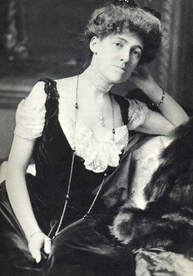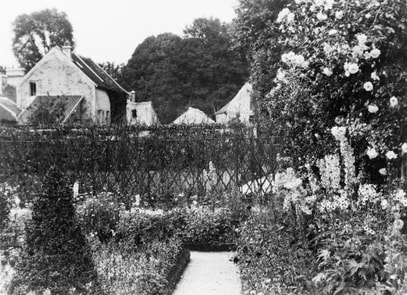 One of Edith Wharton’s best-known quotes is “Life is always a tightrope or a feather bed. Give me the tightrope.” Her activities leading up to World War I certainly reflected that philosophy. Born in 1862, she was best known as a novelist and playwright who used her life experiences as part of the wealthy upper-class New York aristocracy to realistically portray the lives and morals of the Gilded Age. She’d later, in 1921, be the first woman to win the Pulitzer Prize for Literature. In June 1915, Wharton visited the battlefields of the Western Front. The previous fall, the Flemish city of Ypres survived a heavy battle when French, Indian, and British troops defended the town against several German offensives threatening the French ports of Dunkirk and Calais. She reported her experiences in Scribner’s Magazine and in Fighting France, from Dunkerque to Belfort. Excerpts of some, below, are edited in World War I and America: Told by the Americans Who Lived It by A. Scott Berg. Arriving at the Front In June 1915, Wharton’s motor car could barely make it through a steady stream of soldiers of all types—cavalry, mechanics, munitions workers, and others. She could hardly see them for the heavy dust being raised by their movement. Her gift for descriptive writing is evident as she describes the sun creating a “flash of lances” and a small touch of gold on faded uniforms. She next describes the beauty of the environment in an area untouched by the war—farmhouses, duck ponds, beautiful flowers—everything sweet and secluded, including an ancient abbey church. Except for the French architecture, many of the villages reminded her of England. A day later they arrived at an aviation camp spread across a green plateau. The English had hastily made an English town in nearby St. Omer, where the British Red Cross and the ambulance corps were stationed. Battle Views Soon she was in Cassel, a Renaissance town with the most extensive view of any town in Europe. The square was filled with English army motors and horses. On top of the ‘rock of Cassel’ they could see Dunkerque, Ypres, and other towns, many ruined, through the mist. Later that night, while the town below them slept, Wharton and a small band returned to the rock and could see red flashes and white flares along the fighting lines far away. The next day they rode through territory that was often questionably behind the imaginary German boundary lines. In improvised camps, tents were made from wagon covers, shirts were laid out to dry on elder bushes, and soldiers played with local children or talked to citizens. They came to an empty town with only shells of buildings remaining. Odd, a town with no people. They continued through several similar villages that day. She was disheartened. Had these towns been under an evil shadow, that Germany had willed that these places should die? More than once the next few days, she was unprepared for a bombardment by “big guns” that caused their entourage to change their travel route. They arrived near the Northern Ocean. The contrasts of a standing Gothic church and houses with fronts torn off made a deep impression on her. She felt that the painful sights of human wounds—dangling bedsteads, trashed chairs and stoves—were greater than those of the wounded church. But she was also relieved that the human spirit was still alive. Curious children played at a bomb crater; women bartered for kitchen utensils. In a nearby field, a colonel was holding a medal ceremony. On leaving the battle zones, she again waited for an hour as fresh troops marched past, raising dust, toward the front.  La Pavillon Colombe- Wharton's home in France La Pavillon Colombe- Wharton's home in France After the war, Wharton left Paris and settled in an 18th century manor house near the village of Saint-Brice-sous-Foret, similar to the ones she'd passed through during the war. She died in France in 1937. Literary Storytelling The difference in writing styles between author Wharton and journalist Nellie Bly, the subject of the last blog post, or reformer Jane Adams (next post) is interesting. Bly’s and Adams’s reports are factual. Wharton brings a literary style to her reports, making her descriptions more vivid and interesting. Next time: Women and World War I Continues: Jane Adams, Reformer
Ann Otto writes fiction based on factual as well as oral history. Her debut novel, Yours in a Hurry, about Ohio siblings relocating to California in the 1910’s, is available on-line at Amazon, Barnes & Noble, Kindle, and at locations listed on her website at www.ann-otto.com. Ann’s academic background is in history, English, and behavioral science, and she has published in academic and professional journals. She enjoys speaking with groups about all things history, writing, and the events, locations, and characters from Yours in a Hurry. She is currently working on her next novel about Ohio’s Appalachia in the 1920’s, and prepared for future works by blogging about a recent World War 2 European tour. She can be reached through the website, or on Facebook @Annottoauthor or www.Goodreads.com
0 Comments
Leave a Reply. |
Archives
August 2020
Categories
All
|
 RSS Feed
RSS Feed